
Phoneutria is a genus of spiders in the family Ctenidae of potential medical significance to humans. They are mainly found in northern South America, with one species in Central America. Members of the genus are commonly referred to as Brazilian wandering spiders. Other English names include armed spiders and banana spiders.
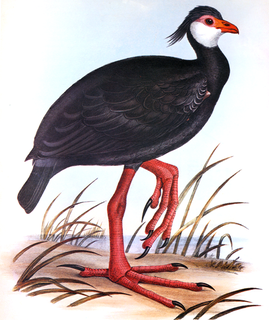
George Robert Gray FRS was an English zoologist and author, and head of the ornithological section of the British Museum, now the Natural History Museum, in London for forty-one years. He was the younger brother of the zoologist John Edward Gray and the son of the botanist Samuel Frederick Gray.

In zoological nomenclature, a type species is the species name with which the name of a genus or subgenus is considered to be permanently taxonomically associated, i.e., the species that contains the biological type specimen(s). A similar concept is used for suprageneric groups and called a type genus.

Lates is a genus of lates perches belonging to the family Latidae. The generic name is also used as a common name, lates, for many of the species.
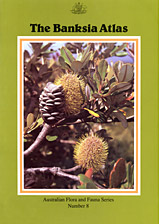
The Banksia Atlas is an atlas that documents the ranges, habitats and growth forms of various species and other subgeneric taxa of Banksia, an iconic Australian wildflower genus. First published in 1988, it was the result of a three-year nationwide program involving over 400 amateur and professional volunteers.
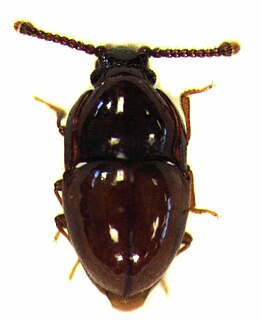
Cryptophagidae is a family of beetles with representatives found in all biogeographic realms. Members of this family are commonly called silken fungus beetles and both adults and larvae appear to feed exclusively on fungi although in a wide variety of habitats and situations, such as rotting wood and shed animal fur and feathers. These beetles vary from about 1 to 11 millimeters long, and usually have an oval body shape with a slight "waist".

The Palaeonisciformes are an extinct order of early ray-finned fishes (Actinopterygii) which began in the Late Silurian and ended in the Late Cretaceous. The name of the order is derived from the Greek words paleo (ancient) and ὀνίσκος, probably pertaining to the organization of the fishes' scales, similar to the exoskeletal plating of woodlice.

Anadara is a genus of saltwater bivalves, ark clams, in the family Arcidae. It is also called Scapharca.
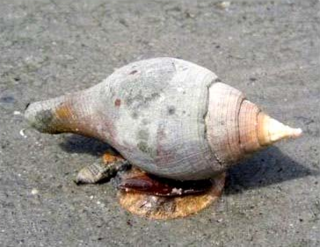
Turbinella is a genus of very large sea snails with an operculum, marine gastropod mollusks in the family Turbinellidae.
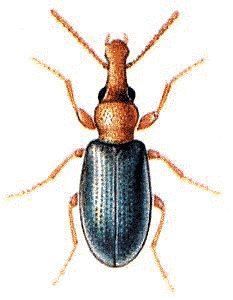
Salpingidae or narrow-waisted bark beetles is a family of beetles, in the large suborder Polyphaga. The species are small, about 1.5 – 7 mm in length. This family is worldwide distributed and consists of about 45 genera and 300 species.
Eupleura is a genus of sea snails, marine gastropod mollusks in the family Muricidae, the murex snails or rock snails.
Narycia is a small genus of the bagworm moth family, Psychidae. Therein, it belongs to the tribe Naryciini, here place in the somewhat disputed subfamily Naryciinae which is sometimes included in the Taleporiinae. Some authors include Diplodoma in Narycia as a junior synonym, but this is not widely accepted.
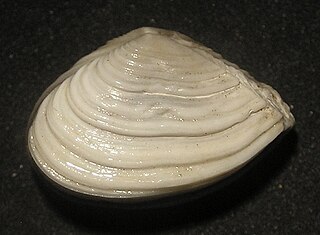
Corbula is a genus of very small saltwater clams, marine bivalve molluscs in the family Corbulidae, the basket clams.

Marginellinae is a taxonomic subfamily within the larger family of Marginellidae, a group of small sea snails, marine gastropod molluscs in the superfamily Volutoidea.

Arca is a genus of saltwater clams in the family Arcidae, the ark clams.

Dileptus is a genus of unicellular ciliates in the class Litostomatea. Species of Dileptus occur in fresh and salt water, as well as mosses and soils. Most are aggressive predators equipped with long, mobile proboscides lined with toxic extrusomes, with which they stun smaller organisms before consuming them. 13 species and subspecies of Dileptus are currently recognized.

Gracillariinae are a subfamily of moths which was described by Henry Tibbats Stainton in 1854.

Criomorphus is a genus of delphacid planthoppers in the family Delphacidae. There are about 13 described species in Criomorphus.
Beraea is a genus of insects in the family Beraeidae.
Aploderus is a genus of beetles belonging to the family Staphylinidae.
















